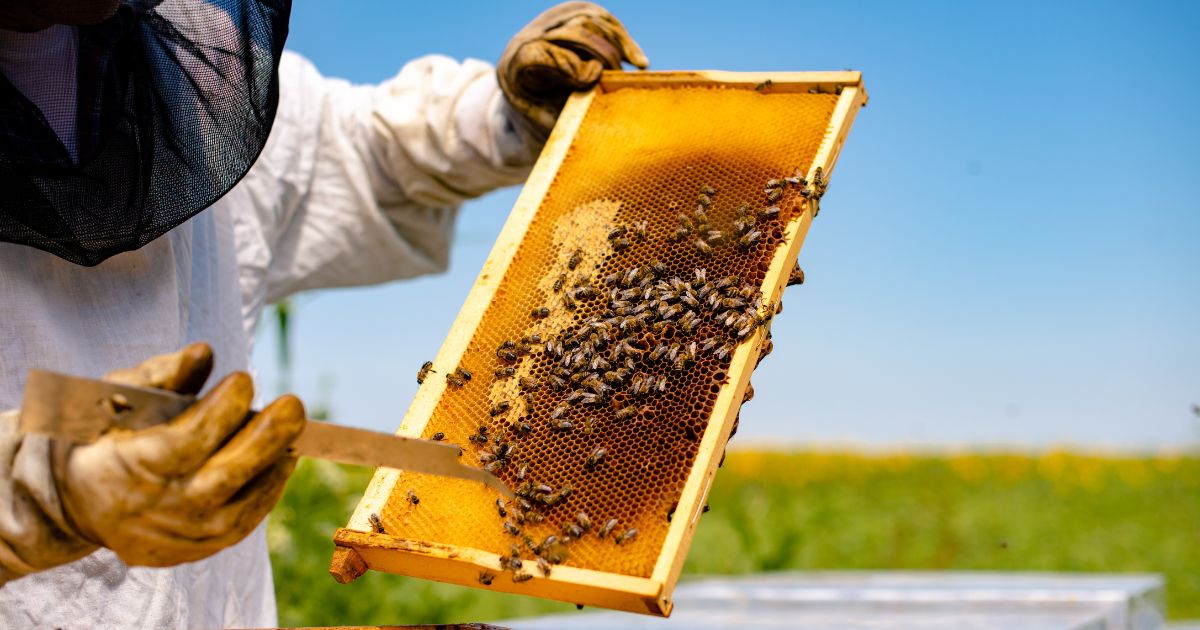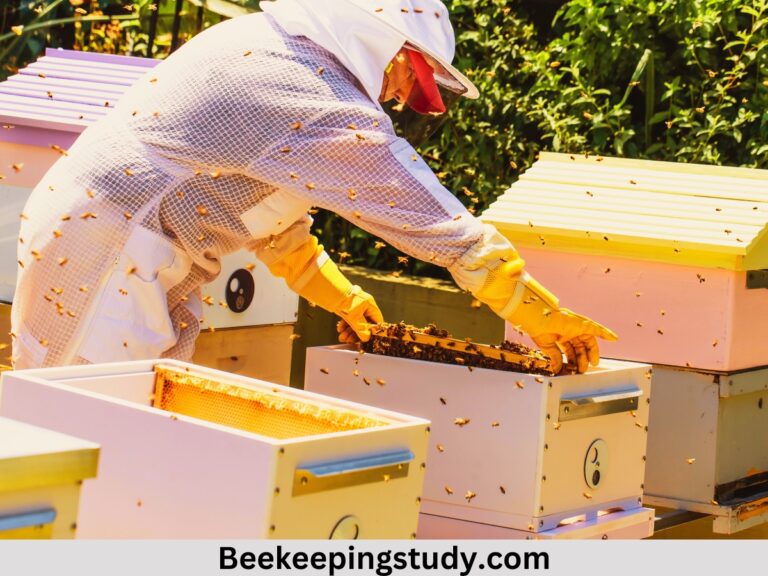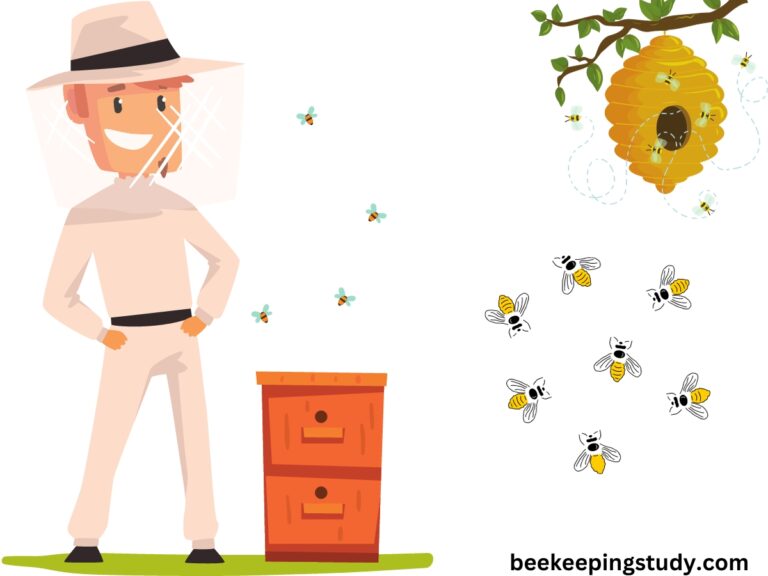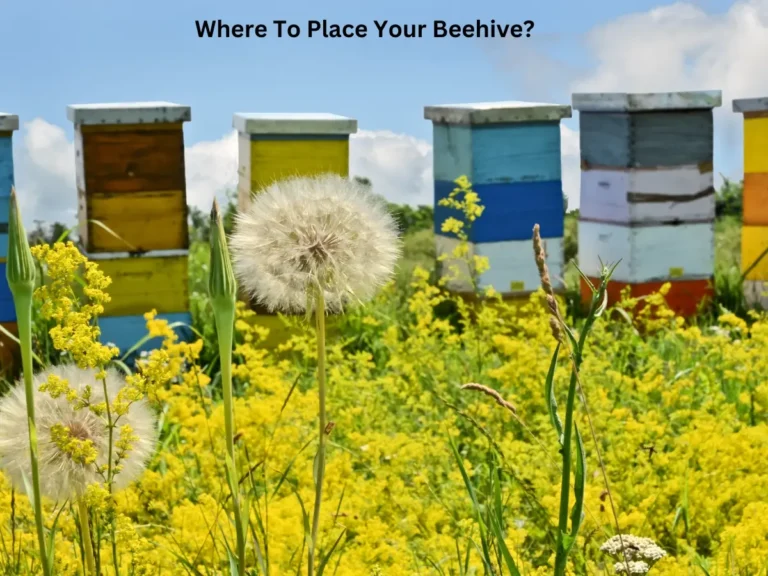This post might be created with help from AI tools and carefully reviewed by a human (Anthor Kumar Das). For more on how we use AI on this site, check out our Editorial Policy.
How To Properly Clean Beekeeping Gloves [Different Ways]
At the beginning of my beekeeping journey, my gloves didn’t last long. I had to replace them after using them only a few times. Because I wasn’t careful about washing my beekeeping gloves properly.
Then I learned how to clean beekeeping gloves properly from my advisor beekeeper. I have noticed that the glove’s quality didn’t drop as fast as before.
However, now I have proper knowledge about cleaning all types of beekeeping gloves. That’s what I am going to discuss in this post.
You know how messy and sticky the beekeeping gloves become each time you come out from your hive. So, washing your beekeeping gloves will protect yourself as well as your bees from different types of diseases.
Because beekeeping gloves contain a lot of germs and other types of garbage during cleaning and maintaining bees & beehives.
So, cleaning beekeeping gloves each time you come from your beehive is must necessary. Also, you must have proper knowledge about the washing methods for different beekeeping gloves. Because different types of beekeeping gloves have different methods of washing.
So, you can’t use the same method to clean all types of beekeeping gloves. Otherwise, your glove’s quality may lost soon.
In this particular tutorial, I am going to guide you on
- How to clean beekeeping gloves properly.
- Different cleaning methods for different beekeeping gloves.
Different Types Of Beekeeping Gloves
Different beekeepers prefer different gloves for hive monitoring. Some of them may like leather gloves and some may go for goatskin gloves and so on.
There are 3 Types of beekeeping gloves that beekeepers frequently use:
- Leather Gloves.
- Goatskin Gloves.
- Nitrile Gloves(Disposable).
Let’s discuss a little about these 3 different types of gloves used in beekeeping.
Leather Gloves
Leather gloves are used by most beekeepers who working in beekeeping for a long time. These gloves are reusable and have longer durability.
These gloves are made from the leather of different types of animals like pigs, goats, lambs, pigs, kangaroos, and so on.
Though these gloves have longer durability, they won’t be useful for beekeepers who are new to beekeeping. Because these type of gloves has a higher thickness. As a result, you might not feel what you are actually touching.
Goatskin Gloves
These are a kind of leather gloves made from the skin of goats. These gloves can be used as a replacement for other leather gloves because they have less thickness. It will protect you from unwanted bee stings but it is still not the best one to choose.

Nitrile Gloves(Disposable)
These gloves are made from nitrile rubber. They have water, oil, and different types of chemical resistance. They are the most popular kind of beekeeping gloves used by almost all levels of beekeepers. They are thinner than any other beekeeping gloves.
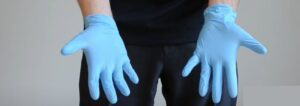
What Is The Best Beekeeping Gloves?
In my personal opinion if you are a beginner you may go for nitrile gloves. These will protect you from bee stings and can be cleaned easily.
Besides, these gloves have less thickness so you will be comfortable wearing this type of gloves. You can easily feel what are you touching. And chances of killing bees while cleaning and caring for your hives will be reduced by using nitrile gloves.
But when you are an expert you can go for goatskin and leather gloves as they require less washing and have longer durability.
I have also started with nitrile gloves. In the beginning, I was not aware of the proper washing method for beekeeping gloves. I tore the skin of one of my beekeeping gloves within 1 month of use.
However, then I got to know the exact way to wash beekeeping gloves. Thus I became able to clean them properly and use them for a longer duration. Currently, I am using Goatskin gloves for hive monitoring.
How To Clean Different Beekeeping Gloves Properly?
Let’s now learn about the washing methods of all of these 3 different types of beekeeping gloves.
The first rule is don’t through your gloves into a washing machine. You can’t wash your gloves as usually you wash your clothes. You must keep in mind a few things to wash your beekeeping gloves properly.
How To Clean Leather And Goatskin Beekeeping Gloves
As I already told you goatskin gloves are one type of leather beekeeping gloves, thus they have the same washing methods.
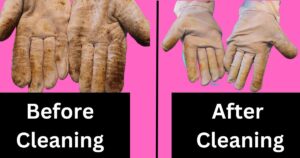
So, let’s start cleaning our leather beekeeping gloves.
- Step-1: Take a bucket of cold water. Don’t take hot water as it can reduce the durability of your leather gloves. Also, don’t do this on a basin or bathtub. To make it easier and more effective I suggest you fill the larger half of your small bucket (approximately 10 to 15 L) with cold water.
- Step-2: Now Put 3-4 teaspoons of detergent or dishwashing soap into your bucket. Stir well until they are completely mixed.
- Step-3: It is a very important step! Now you have to remove the large propolis, honey, and wax from the gloves. Make sure you keep wearing your gloves. Now make a mixer of water and liquid dishwashing cleaner with a 2:1 ratio. Then put them on your gloves and rub your gloves exactly like you are washing your hands. Rub very well until the germs become soft and washable. If you can use vinegar with the mixture it will be more useful to remove propolis.
- Step-4: Put your gloves with your hand inside the bucket and rub again your both hands like washing hands.
- Step-5: After then open your gloves from your hand and put them into the bucket for 30 to 40 minutes.
- Step-6: After 30-40 minutes take the gloves and graze them very well inside the water.
- Step-7: Now take the gloves from the bucket and through the water in empty space. And fill the bucket with clean water.
- Step-8: Clean your gloves once or twice with clean water by rubbing well.
- Step-9: Rinse them very well. Now put them in sunlight or any other way until they become completely dry.
After becoming completely dry your gloves may not look like new but they are ready to use and will look far better.
How To Clean Nitrile Beekeeping Gloves
I already told you nitrile gloves have water and chemical resistance. So, washing methods for this particular type of gloves are pretty easy. All you need to do is just follow the steps below:
- Step-1: You can use a bucket or tub to wash your nitrile gloves. Take warm water of temperature 33-35 degrees.
- Step-2: Put a couple of teaspoons of dishwashing soap or detergent and a teaspoon of vinegar into the water. Stir well to make a perfect solution.
- Step-3: In order to remove propolis or hard germs first take a teaspoon of dishwashing liquid. If possible take a teaspoon of vinegar and rub well.
- Step-4: Then wash your gloves like you are washing your hands. Rub them very well.
- Step-5: Put your hands with the gloves into the bucket.
- Step-6: Squirt them very well until you feel the germs are removed properly.
- Step-7: Rinse the gloves properly and put them in a suitable place to dry out.
After drying your gloves your gloves are again ready to use. But before going to the washing steps I would like to share with you some prewashing tips you can try.
Tips For Cleaning And Dissolving Wax, Propolis, and Honey From Your Gloves
In order to remove propolis from your gloves alcohol might be a perfect choice. The most common and effective alcohols to remove propolis as well as wax and honey from your beekeeping gloves are methanol and ethanol.
Ethanol is also known as ethyl alcohol. Vinegar could also be able to remove these substances from your gloves.
If detergent, dishwashing liquid mixture, vinegar, and alcohol is still failed to remove stains and other unwanted pieces of stuff from your gloves you can try solvent.
In simple words, a solvent is a type of substance that has the ability to dissolve any other substance without changing it. If you want to know more about solvents you can read this Wikipedia post.
I usually use kerosene and liquid spirit as a solvent to remove hard germs and sticky substances from any materials. So, you can also try them too to dissolve wax, propolis, and honey from your gloves.
But remember solvent is a firing substance. So, don’t use any firing agent or smoke around it while using a solvent. Also, make sure you don’t use solvents in hot and sunlight areas.
Best Bleaching Agents for Removing the Honey Stains
There are several bleaching agents used by beekeepers to remove honey stains like H2O2, Vinegar, Lemon essence, oxygen bleach, etc.
Most of these agents are sensitive and cause damage to the material of your gloves. So, always make sure to use them with a small concentration according to the instructions written on their container.
You will find all of these agents in any household shop or in any supermarket quite easily. Don’t soak your gloves entirely into the solution of any of the bleaching agents.
Try to use a brush or similar type of cleaning material and clean the area that contains bee stings and hard germs.
Wash them with warm and clean water by rubbing them well.
Among all of those several bleaching agents, I would suggest you use a low concentration of oxygen bleach or lemon juice. These 2 bleaching agents don’t cause any damage to your beekeeping gloves.
So, oxygen bleach or lemon juice are equally the best bleaching agents to remove honey stains from your beekeeping gloves.
Tips For Softening And Longer Durability Of Your Beekeeping Gloves
As I am a beekeeper for a long period of time. I have worked with different types of beekeeping gloves. I follow some tips to soften my beekeeping gloves and use them for longer periods of time. Here are those tips:
- Select The Right Beekeeping Gloves: Gloves type selection is really important to make your beekeeping easier and more profitable. For this, I would suggest you first go with nitrile gloves as they are thin and disposable. After working a few years with them you will be an expert in treating your beehive. Then you can move with goatskin beekeeping gloves as they last longer than nitrile gloves. Moreover, some beekeepers get stung by bees while using nitrile gloves as they have a thin layer.
- Wash Your Gloves On a Regular Basis: Don’t use your gloves multiple times without washing them. Otherwise, it could be harmful to your beehives as well as it will also damage your gloves quite fast.
- Try To Avoid Using Solvent: Solvent can work to remove hard germs like propolis, honey, and wax. But don’t use them regularly. They can be harmful to your skin as well as the solvent can damage the material of your beekeeping gloves.
- Keep your gloves in a dry and cool place.
- Don’t wash your gloves using the washing machine.
- If your gloves are torn apart or contain a few narrow holes replace your gloves with a new pair of gloves.
Frequently Asked Questions
Why is honey so hard to clean from your gloves?
Well, when honey is kept for a while in your gloves or over any material it will inevitably crystallize. They are sticky and messy substances. That's why it will become very difficult to remove honey from your gloves.
Can you machine wash bee gloves?
It is not suggested to use a washing machine to clean beekeeping gloves. Beekeeping gloves should be cleaned in proper ways. Washing them in warm and clean water with detergent is quite enough. Just like you are washing your hands with water.
Final Thoughts
Hopefully, you have no confusion about how to clean beekeeping gloves. Washing your beekeeping gloves regularly is an unavoidable part of successful beekeeping. Also, different beekeeping gloves must be cleaned by following different cleaning methods.
Follow the above rules to clean different beekeeping gloves properly according to the type of your gloves. Make sure not to use solvent unless you are unable to remove stings, propolis, wax, and honey properly.
You can’t expect to clean your beekeeping gloves like it is completely new. Because honey is very hard to remove. But if you follow my beekeeping gloves cleaning methods you will be able to clean your gloves enough to make them ready for use once again.
Inspect your gloves regularly and wash them properly to make the best use of them. Remember every proper step related to your beekeeping is responsible for making a successful beekeeping business.

